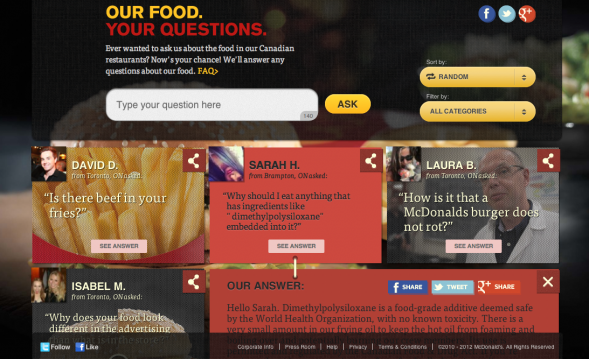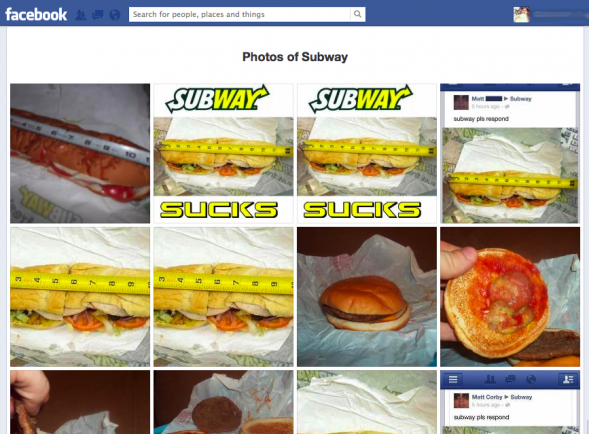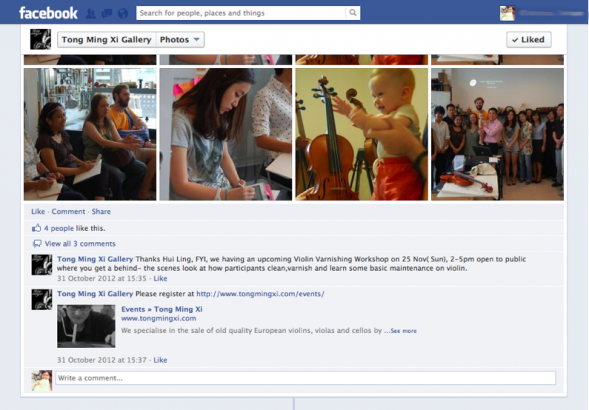It was the backfire heard around the social media marketing world.
When McDonald’s invited people to tweet and tag their #McDStories, the fast food giant expected heartwarming anecdotes. Instead it got a flood of pithy insults in 140-character chunks. McDonald’s yanked the campaign within hours, but days later stories of unhappy meals were still coming.
McDonald’s hashtag-turned-bashtag may be enough to scare many brands into steering clear of social media and user-generated content, but the numbers can’t be ignored.
According to a study by We Are Social, which covered 24 countries in Asia, the continent is now home to half of the world’s social media users. Asia has more Facebook users than any other continent, with 10 million new people joining every month. In June 2012 alone Asia’s netizens watched almost 45 billion videos. These figures are only expected to rise in 2013.
The report also gave insight into the relationship between social media activity and purchasing behaviour. Sixty percent of Internet users in Asia use social media to inform purchase decisions, while 28% would buy a brand because a friend “likes” it on social networks, almost double the figure for internet users in North America.
How can companies in Asia make more effective use of social media to enhance their online brand experience, create brand advocates and ultimately impact the bottom line? The following tips can help you get started.
1. Know what you want and how to get it
Define your marketing goals and map out a strategy to achieve them. That may seem like stating the obvious, but a quick look around Facebook and Twitter will tell you that too many brands dive into social media without a plan. Resist the urge to adopt a trend simply because your competitors are doing it. What works for one brand may not work for another, not to mention the possibility that the brands you choose to follow are flying blind too.
Instead spend a bit of time understanding your target audience and figuring out how best to engage them. Which social networking sites do they use most frequently? How do they spend their time online? Who are the influencers? What have they been saying about topics related to your brand? These will help you decide which platforms to focus on and what tactics to employ.
The #McDStories fiasco, for instance, might have been avoided had McDonald’s analysed consumer sentiment on various social media sites beforehand. The company eventually got the message and adjusted its strategy to focus on debunking myths about its food quality and mitigating its bad rep. McDonald’s launched a website that gave candid answers—with informative videos and third-party expert opinions occasionally thrown in—to questions such as “How is it that a McDonald’s burger does not rot?” and “Why is your food made out of plastic?”

McDonald’s answers even the most absurd questions, sometimes with educational videos.
2. Keep the conversation going
Build lasting relationships with customers through authentic interactions and compelling content. Don’t treat social media as just another broadcast channel to bombard people with information. You want to engage people in conversation, not be the guy that everyone tunes out.
Rule of thumb: If it won’t work in face-to-face interaction, it most likely will not work on social media. Automated responses, canned replies from the customer service handbook and too frequent marketing messages have no place in an effective social media strategy.
Even negative comments can serve a purpose. See them as an opportunity to listen and learn from what your customers are trying to say and respond in a timely manner. It’s best to apologise, clear up any confusion or offer a solution, as the case requires, lest the situation turn viral like the recent debacle on Subway’s less-than-footlong sandwiches.

The original photo may have been deleted, but that started an onslaught of user-generated photos.
As for scheduled posts, they can help keep your social media efforts on track, but remember to be flexible and to stay on top of current events. You don’t want to be caught in the same unfortunate position as the National Rifle Association, when a Twitter account associated with the group posted, “Good morning, shooters. Happy Friday! Weekend plans?” mere hours after a man opened fire at a midnight showing of the last Batman movie.
3. Bring the action offline
The benefits of social media marketing may be more obvious for online businesses, but more and more brick-and-mortar businesses are enjoying the perks.
In a survey conducted by the ACTIVE Network 47% of social media users said that they had taken some type of offline action as a result of social media interactions. Facebook (58%) and Twitter (31%) ranked highest in prompting users to attend an event. Facebook (23%) also ranked first in driving users to make a purchase, closely followed by Pinterest (21%).
Don’t miss out on the chance to turn those hashtags into dollars signs. Remember that social media marketing is but one component of your overall marketing strategy. Integrate your social media efforts with your other channels and use online interaction to drive offline activity for your business.
Tong Ming Xi, a Singaporean company specialising in the sale and restoration of high-end string instruments, uses its Facebook page to invite customers to its events, occasionally running simple Facebook contests to give away workshop tickets. The company also shares photos of violin collections featured at its showroom and links to educational articles posted on its website. Tong Ming Xi runs its Facebook page in house, proving that social media marketing need not be a complex endeavour even for a company with less than 10 staff.

Inviting Facebook fans to attend events is one way of integrating online and offline efforts.
Regardless of the hype surrounding social media these days, it’s good old relationship building at the core. Amid ‘retweets’, ‘pins’ and ‘likes’, a little genuine human interaction still goes a long way.
Nicole Brion is a Senior Manager at Consulus. She specialises in designing web experiences for both business and consumer markets to boost the online presence of clients in various industries including retail, F&B, banking and real estate.
This article is part of The Columnist, a newsletter by Consulus that offers ideas on business, design and world affairs. For past issues, browse the complete archive.




